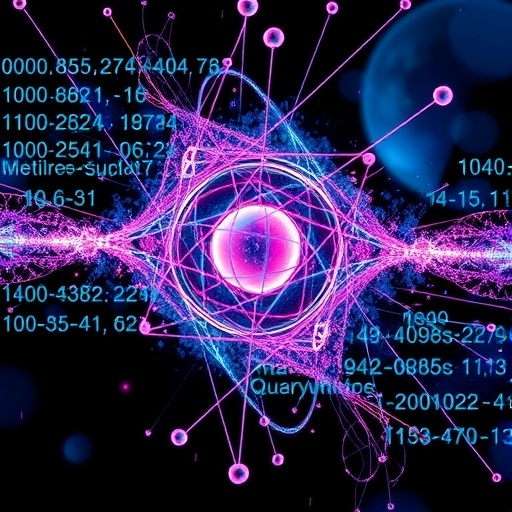In a groundbreaking advancement poised to reshape the landscape of quantum technology, researchers from Kyoto University and Hiroshima University have successfully developed a novel entangled measurement technique specifically tailored for the W state—a fundamental multi-photon quantum entangled state. Quantum entanglement, the enigmatic phenomenon in which particles become interconnected such that the state of one instantaneously influences the state of another regardless of distance, challenges classical intuitions and has been a central enigma since the early days of quantum theory. This new achievement addresses a critical hurdle in the practical exploitation of entangled states for quantum computing, communication, and beyond.
At its core, quantum entanglement defies the notion that individual particles possess independent states. Unlike classical systems where every particle’s properties can be described separately, entangled systems require holistic descriptions. The W state represents a robust form of entanglement involving multiple photons, notable for its unique symmetry and resilience against particle loss. However, identifying and characterizing such states has historically been fraught with complexity due to the exponential growth in measurement requirements as photon numbers increase—a fundamental bottleneck in scaling quantum technologies.
Traditional quantum tomography, the prevailing method for characterizing quantum states, demands a multitude of measurements that multiply exponentially with the number of particles involved. This overwhelming requirement makes full state verification impractical for multi-photon systems beyond a handful of photons. Herein lies the promise of entangled measurements, which allow the direct and efficient identification of entangled states in a single measurement shot, circumventing exhaustive data collection. While entangled measurement frameworks have been implemented for the Greenberger-Horne-Zeilinger (GHZ) states—another class of multi-photon entangled states—no experimental realization existed for the W state until now.
Motivated by this gap, the research team led by Shigeki Takeuchi devised a theoretically robust method capitalizing on the inherent cyclic shift symmetry of the W state. By leveraging the properties of quantum Fourier transformation within photonic quantum circuits, they crafted a strategy to perform entangled measurements on W states regardless of photon count. This approach ingeniously maps the complex characteristics of the W state onto a computational basis amenable to efficient measurement, transforming the challenge of identification into a tractable quantum operation.
To validate their theoretical framework, the researchers fabricated a high-stability photonic quantum circuit designed specifically for three-photon W states. This device circumvents the need for active feedback or control mechanisms, maintaining stable operation over extended durations—a crucial feature for practical quantum devices that demand reliability and consistency. By injecting three single photons prepared in predetermined polarization states into the circuit, the team experimentally demonstrated the device’s ability to discriminate between different forms of three-photon W states, each distinguished by unique non-classical correlations.
The fidelity of the entangled measurement, reflecting the likelihood of correctly identifying a pure W-state input, was meticulously evaluated. High fidelity values underscore the device’s exquisite precision and the effectiveness of the measurement protocol. This empirical success represents the first authentic experimental manifestation of entangled measurement on the W state, marking a major milestone in quantum optics and information science.
Beyond its immediate experimental triumph, this novel measurement technique holds significant implications for the future of quantum technologies. Efficient and reliable identification of W states unlocks enhanced capabilities for quantum teleportation—the transfer of quantum information from one location to another without moving the physical particles themselves. Additionally, it paves the way for innovative quantum communication protocols that utilize multi-photon entanglement, potentially increasing security and information capacity in quantum networks.
Measurement-based quantum computing stands to benefit as well. By integrating entangled measurement capabilities into computational architectures, quantum processors can more readily exploit entanglement resources, enhancing speed, scalability, and error resilience. This development could radically accelerate the transition from proof-of-concept quantum devices to practical, large-scale quantum computers capable of solving classically intractable problems.
Looking forward, the team is ambitiously setting sights on extending their method to encompass larger-scale, more generalized multi-photon entangled states. Such scalability would offer profound enhancements to both fundamental quantum physics research and applied quantum engineering. Furthermore, the researchers intend to integrate their photonic quantum circuits onto chip-based platforms, aligning with the worldwide momentum toward miniaturized, manufacturable quantum hardware.
According to Shigeki Takeuchi, the corresponding author of this pioneering work, “It is crucial to deepen our understanding of basic quantum concepts to foster innovative ideas that propel quantum technology advancements.” This sentiment highlights the synergy between theoretical insight and experimental ingenuity—a hallmark of progress in the rapidly evolving domain of quantum science.
The implications of this research extend beyond the laboratory, potentially influencing future quantum networks, secure communications infrastructure, and computational paradigms. By solving a long-standing experimental puzzle, the Kyoto-Hiroshima team has laid a solid foundation for the next generation of quantum information science, encouraging interdisciplinary collaboration and inspiring new avenues of exploration.
This unique blend of advanced quantum theory, precision photonic engineering, and experimental prowess exemplifies the remarkable strides being made at the intersection of physics and technology. As the quantum revolution continues to unfold, breakthroughs such as this entangled measurement for the W state will prove indispensable for transforming quantum phenomena from scientific curiosities into practical tools that redefine our technological capabilities.
Subject of Research: Not applicable
Article Title: Entangled Measurement for W states
News Publication Date: 12-Sep-2025
Web References: http://dx.doi.org/10.1126/sciadv.adx4180
Image Credits: KyotoU / Takeuchi lab
Keywords
Quantum entanglement, Quantum mechanics, Quantum states, Quantum measurement




